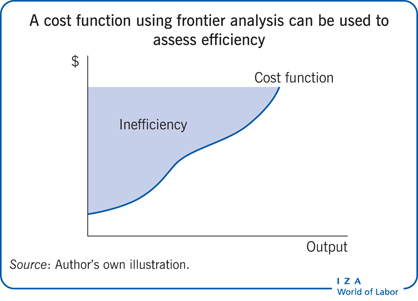Elevator pitch
Efficiency is an important consideration for those who manage public services. Costs vary with output and with a variety of other factors. In the case of higher education, for example, factors include quality, student demographics, the scale and scope of the higher education provider, and the size and character of the real estate. But even when taking all these factors into account, costs vary across providers because of differences in efficiency. Such differences offer clues about good practice that can lead to improvements in the system as a whole. The role of efficiency is illustrated by reference to higher education institutions in England.

Key findings
Pros
Examining the costs of public services provides a valuable evidence base to inform case studies aimed at more in-depth analyses of efficiency.
Differences in measured efficiency vary—but the differences may be instructive to policy making.
The recommended statistical approach (frontier analysis with latent classes) relates efficiency directly to what is known about the costs of public service provision and the factors affecting costs.
The approach accommodates concepts of scale and scope, which are important for the consideration of concentration of resources and merger activity.
Cons
The latent class approach does not allow a fine level of disaggregation, with highly correlated variables or limited degrees of freedom.
The latent class approach does not necessarily result in an intuitively appealing classification of institutions.
Estimated efficiency is based on asymmetries in the statistical error, so the confidence intervals around central estimates may be wide.
The concept of efficiency relies on subjective decisions about what cost differences might be permissible, but application of a statistical approach might firm up these judgment calls.